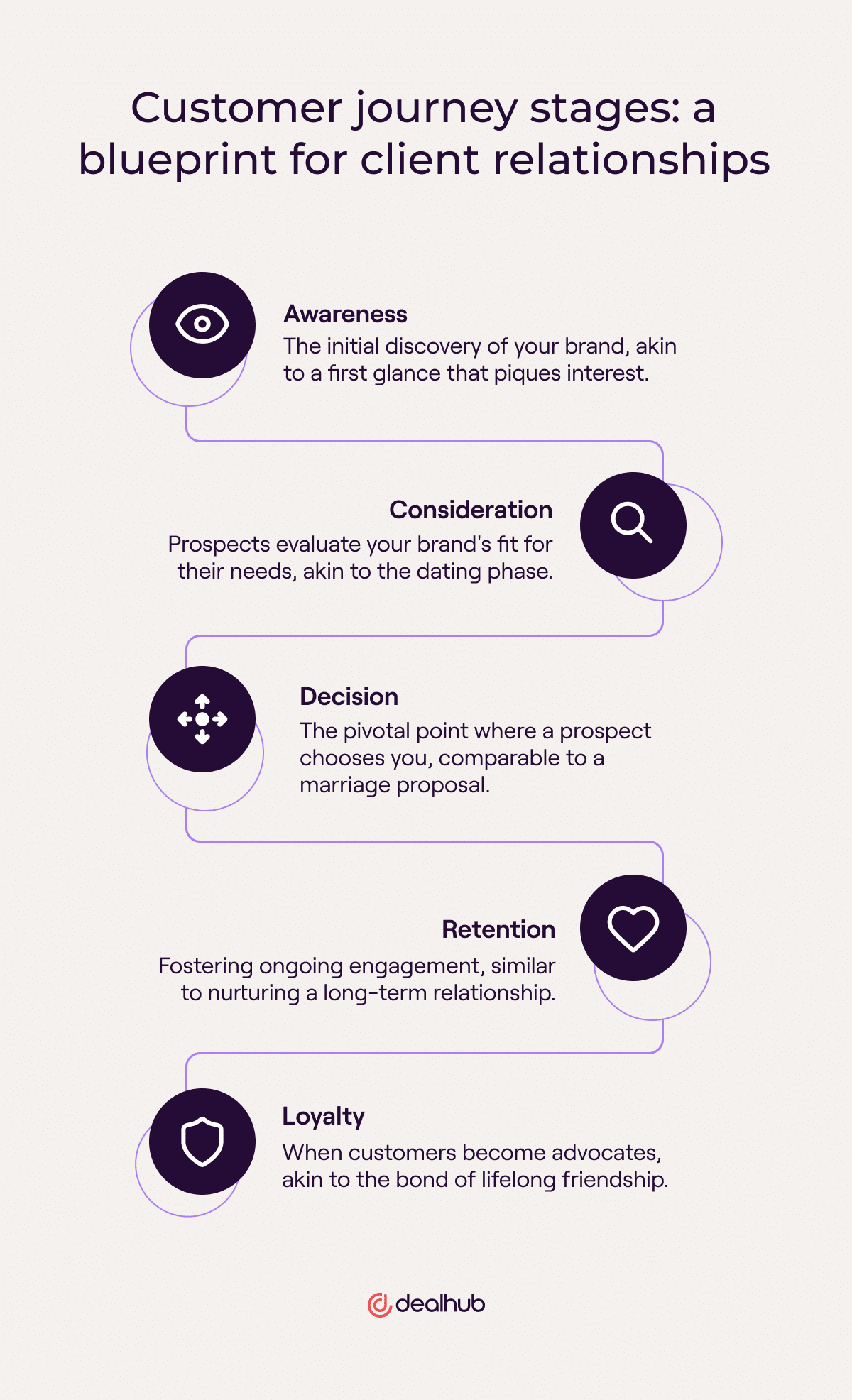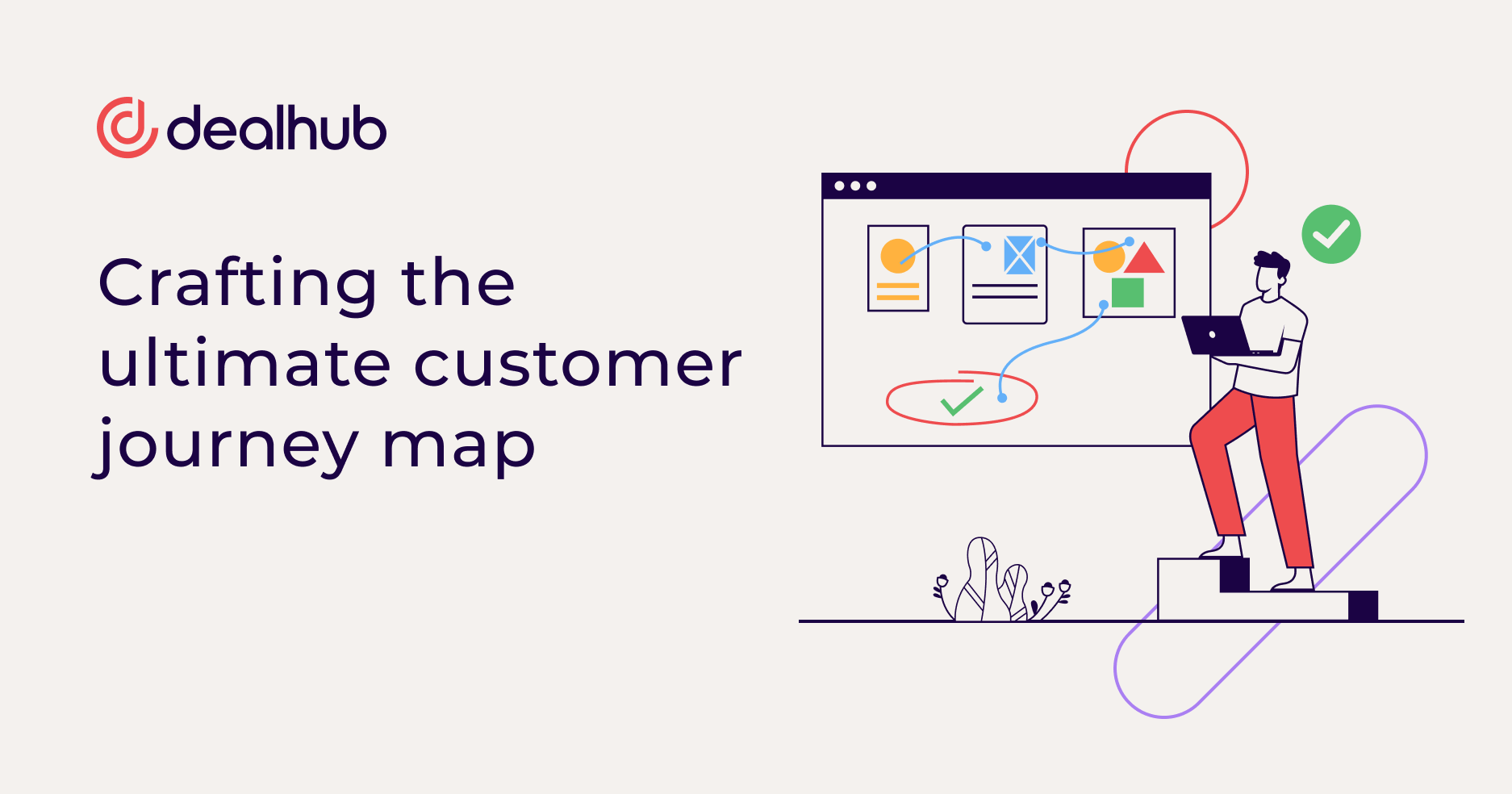How do you craft such an invaluable tool? For marketers, customer experience enthusiasts, and business leaders aiming to weave customer-centric narratives, we’ve created a guide to mapping the customer journey while outlining how to use it to create exceptional experiences (and adapt to changing customer needs).
What is a customer journey map and why is it important?
Modern customer interactions are fast-paced, and the customer’s journey can be unpredictable, weaving back and forth across multiple platforms. A customer experience journey map, therefore, acts as a compass. It’s a visual representation of the entire experience your customers have with your brand, from their first touchpoint to post-purchase engagement. It’s not static, either; it’s dynamic. An effective customer journey map is a living document – an ever-evolving tool that ensures you understand, anticipate, and cater to your audience’s needs.
Why map out your customer’s journey? Well, imagine embarking on a road trip without a map! While you might eventually reach your destination, it would be a bumpy, inefficient ride. For example, you might miss turn-offs or critical stops. You also likely won’t know the most practical way to get from A to B and may become lost or frustrated at various points.
Similarly, without a customer journey map, you risk your customers feeling lost, frustrated, and unsatisfied. That’s why creating a customer journey map is pivotal to your brand’s success. With it, you can visualize precisely when and how to interact with customers in ways that will increase engagement rates and drive conversions.
Overview of customer journey stages
The customer journey has natural stages that should be covered in your map.

Understanding the stages ensures you effectively create a structure upon which your customer journey rests. Think of the journey as the natural progression of a relationship that evolves from first contact to lifelong friendship. Stages include:
Awareness. The journey begins when a potential customer becomes aware of your brand. It’s like the first glance exchanged between two people, marking the beginning of something special. This stage sets the tone for everything that follows.
Consideration. As the journey progresses, customers delve deeper into considering your offerings. They’re exploring the possibilities, much like dating someone to see if they’re a good match. Your task is to ensure they see your brand as the perfect fit or obvious choice.
Decision. This is the moment of truth! Here, the customer decides whether to commit to your brand or walk away. It’s like proposing to your significant other; you want to make it a compelling, memorable experience so they can’t say no.
Retention. The journey isn’t done once you’ve won someone over. Now, the name of the game is customer retention. It’s like nurturing a relationship; you must keep the sparks alive by checking in and incentivizing further engagement to prevent them from drifting away.
Loyalty. The ultimate destination in any customer journey is customer loyalty. This is when your brand has become like a trusted companion, and your customers stick around because they like you and your offering and are willing to advocate on your behalf, much like lifelong friends.
How to create a customer journey map
Now that you have the contours of a customer journey map, it’s time to draw it.

Laying the groundwork
Before you start sketching your customer experience journey map, you need a strong foundation. This involves a few essential best practices to refine your approach. For example:
Use a Template. Choose a customer journey map template or design that suits your needs. Templates offer a structured framework to get you started, making the process more manageable and less daunting.
Set Objectives. Define the aim of your customer journey map. Are you looking to improve customer satisfaction, increase conversion rates, or boost brand loyalty? Your objectives will guide your mapping process.
Define Buyer Personas. To understand your customers better, create detailed buyer personas. Personas are semi-fictional portrayals of your ideal customers, including their demographics, behaviors, and motivations. Personas will allow you to tailor your map to specific audience segments.
Determine Buyer Touchpoints. Identify every interaction point your customers have with your brand. These touchpoints include your website, social media, email communications, in-store experiences, and more. Knowing where customers connect with your brand is crucial for a comprehensive map.
Mapping it out
Creating a customer experience journey map involves delving deep into the customer’s experience and capturing every nuance from the first interaction to post-purchase engagements. To cover every base, here are five items you should include in your map:
- The Buying Process. Visualize the journey from the initial spark of awareness to the final commitment. What steps do customers take to progress through the stages? Map out the route they follow.
- Emotions and Pain Points at Each Step. Understand your customer’s emotional state at each stage. Are they excited, frustrated, or uncertain? Pinpoint pain points and moments of delight. If you understand your customer’s emotional state of mind, you can craft better brand interactions and experiences.
- User Actions at Each Stage of the Journey. Document the actions your customers take at each stage. Are they browsing your website, reading reviews, or contacting customer support? Understanding these behaviors allows you to design a map that caters to their needs.
- Buyer Research. Analyze the types of research customers conduct before making a decision. What sources do they consult, what questions do they ask, and what information are they seeking? These insights will ensure you provide the right content at the right time.
- Solutions Available. List the various solutions you offer at different stages of the journey. What products or services can customers choose from? By aligning these with the buyer’s needs, you can guide them seamlessly through the journey.
Checkpoints in the journey
Since your customer journey map isn’t set in stone, it’s important to solicit feedback from your marketing and sales teams. These are the people who interact most with your customers. With such close proximity to the customer experience, they can provide valuable insights to ensure your map mirrors actual customer experiences. After all, as your customer’s needs change and your product or service evolves, adjustments may be necessary to strengthen the path to conversion and improve the overall journey.
Optimize the customer experience with analytics
Analytics can turbocharge your customer journey map! Use data collected to harness insights that drive proactive enhancements. It’s an excellent resource for tracking key performance indicators (KPIs), monitoring customer behavior, and identifying/predicting trends. And, by making data-informed decisions, you can continuously refine and optimize your map for a superior customer experience.
You can find a wealth of data by leveraging:
- CRM systems that can track customer interactions, preferences, and purchase history, allowing you to identify touchpoints and pain points in the customer journey.
- Email marketing and automation platforms to track user engagement. This data is useful for understanding how customers interact with your campaigns.
- Social media monitoring tools to observe customer sentiment on social media. Social data can provide insights into how customers perceive your brand and where they might experience challenges.
- Data analytics tools for in-depth data regarding user behavior on your website or app. Analyzing this data will identify where customers drop off or get stuck in the journey, providing valuable insights for your map.
Detours and decisions
As a dynamic document, your map should adapt to market shifts, changing customer preferences, and business transformations. After all, the ability to pivot and make strategic decisions based on the evolving landscape is vital.
Think of your map as a GPS that updates in real time. When your customers encounter a roadblock or detour, it will be easier to adjust your approach. Be flexible; evolve and adapt so customers are always headed toward conversion and retention, with as few obstacles as possible.
The journey to exceptional customer experiences
A customer journey map is a constant work in progress, always under construction. Continual evaluation is crucial to ensure there are no roadblocks or dead ends. Think of your map as a way to proactively refine the journey, ensuring it aligns with your customer’s expectations and preferences.
By crafting an exceptional customer journey map, you’ll be able to pave the way for extraordinary brand interactions – all while making your audience feel valued, heard, and inspired. By using the above guidelines, you will uncover your client’s current trajectory and, ideally, find ways to remove friction and source unseen opportunities. With the assistance of shared insights from your sales and marketing teams and data collected from other KPIs, you’ll be able to continually impress your client base – and drive growth.









